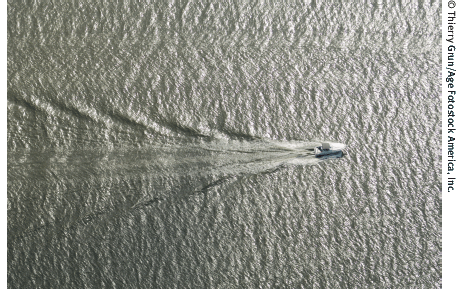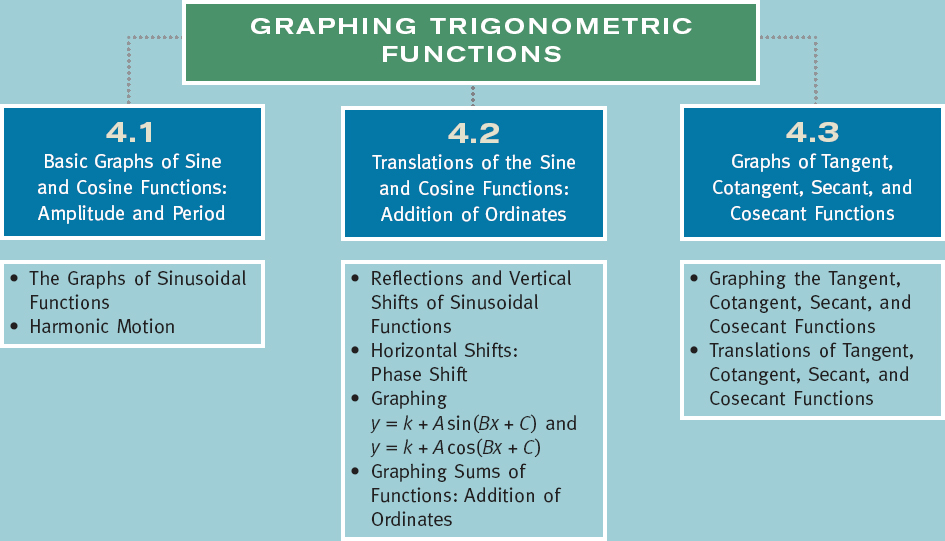
Sine and cosine functions are used to represent periodic phenomena. Orbits, tide levels, the biological clock in animals and plants, and radio signals are all periodic (repetitive).
When you are standing on the shore of a placid lake and a motor boat goes by, the waves lap up to the shore at regular intervals and for a while the height of each wave appears to be constant.
If we graph the height of the water as a function of time, the result is a sine wave. The duration of time between each wave hitting the shore is called the period, and the height of the wave is called the amplitude.

![]() IN THIS CHAPTER, we will graph trigonometric functions. We will start with simple sine and cosine functions and then proceed to translations of sine and cosine functions. We will then use the basic graphs of the sine and cosine functions to determine graphs of the tangent, secant, cosecant, and cotangent functions. Many periodic phenomena can be represented with sine and cosine functions, such as orbits, tides, biological clocks, and electromagnetic waves (radio, cell phones, and lasers).
IN THIS CHAPTER, we will graph trigonometric functions. We will start with simple sine and cosine functions and then proceed to translations of sine and cosine functions. We will then use the basic graphs of the sine and cosine functions to determine graphs of the tangent, secant, cosecant, and cotangent functions. Many periodic phenomena can be represented with sine and cosine functions, such as orbits, tides, biological clocks, and electromagnetic waves (radio, cell phones, and lasers).

LEARNING ...
Get Trigonometry, 3rd Edition now with the O’Reilly learning platform.
O’Reilly members experience books, live events, courses curated by job role, and more from O’Reilly and nearly 200 top publishers.

